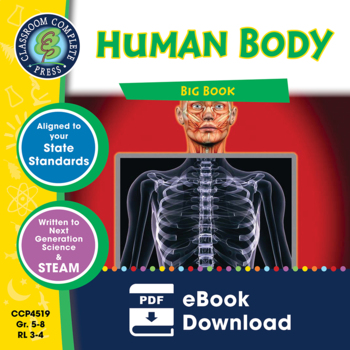Human Body BIG BOOK - Bundle
- Zip
Products in this Bundle (3)
Bonus
Description
Take your students through a fascinating journey of the Human Body with our 3-book BUNDLE.
About this Resource:
Start your journey with Cells, Skeletal & Muscular Systems. Build your own cell by sculpting the different parts. Invent your own alien skeleton using the different bones found in the human body. Next, visit your Senses, Nervous & Respiratory Systems. Learn how the brain interprets things we see with our eyes. Conduct an experiment to see just how much air your lungs can hold. Finally, end your journey with the Circulatory, Digestive & Reproductive Systems. Examine your own heartbeat as you learn how to take your pulse. Build a model of a kidney to see it working in action. Each concept is paired with hands-on activities and experiments.
Aligned to the Next Generation State Standards and written to Bloom's Taxonomy and STEAM initiatives, additional crossword, word search, comprehension quiz and answer key are also included.
************************************************************************
View Individual Titles:
► Cells, Skeletal & Muscular Systems Gr. 5-8
► Senses, Nervous & Respiratory Systems Gr. 5-8
► Circulatory, Digestive & Reproductive Systems Gr. 5-8
************************************************************************
Check out our sister TPT shops:





